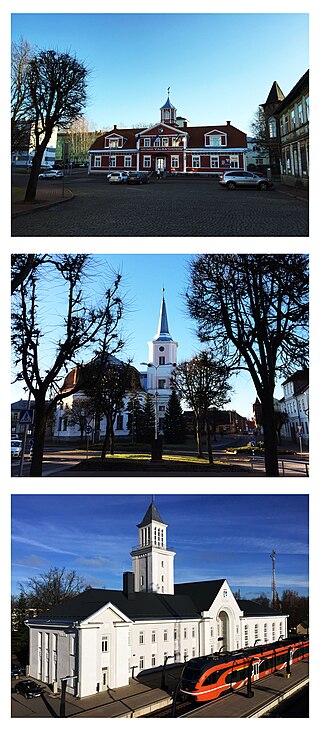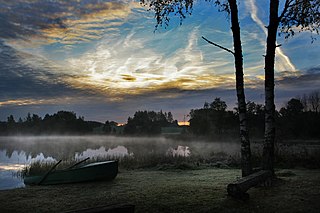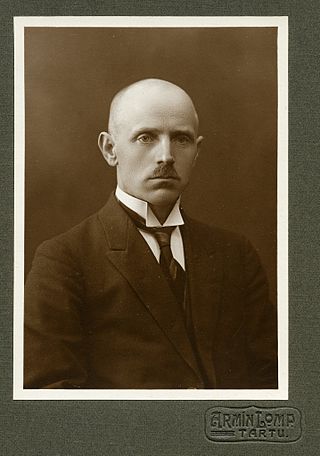
A municipality is the smallest administrative subdivision of Estonia. Each municipality is a unit of self-government with its representative and executive bodies. The municipalities in Estonia cover the entire territory of the country.

Valga is a town in southern Estonia and the capital of Valga County and Valga Parish. Until their separation in 1920, Valga and the town of Valka in northern Latvia were one town. They are now twin-towns. The area of Valga is 16.5 square kilometres and that of Valka is 14.2 km2 (5.5 sq mi). Their populations are respectively 12,261 and 6,164. On 21 December 2007 all border-crossing points were removed and roads and fences opened between the two countries with both countries joining the Schengen Agreement.

Valga County is a first-level administrative unit and one of 15 counties of Estonia. It comprises the former area of Valga District. The present-day county was created on 1 January 1990. The capital and largest town of Valga County is Valga, followed by Tõrva and Otepää. It is situated in the southern part of the country and borders Põlva and Võru County to the east, Latvia to the south and west, and Viljandi and Tartu County to the north. 27,650 people live in Valga County as of 2022.

Võru County is a county in southern Estonia. It is bordered by Valga and Põlva counties, Latvia's Alūksne and Ape municipalities, and Russia's Pskov Oblast.

Karula Parish was a rural municipality in Valga County, Estonia.

Karula National Park is a national park in southern Estonia. It was established in 1979 as a protected area and in 1993 became a national park. It is the smallest national park in Estonia.
Pugritsa is a village in Valga Parish, Valga County, in southeastern Estonia. It is located about 10 km southeast of the town of Valga, it also borders Latvia on its southwestern side. Pugritsa has a population of 40.

Lüllemäe is a village in Valga Parish, Valga County, in southern Estonia. Prior to the 2017 reform of Estonian municipalities, it was the administrative centre of Karula Parish. Lüllemäe has a population of 202.

Londi is a village in Valga Parish, Valga County, in southeastern Estonia. It borders the town of Valga in the northwest, Estonia–Latvia border in the southwest and Valga–Pechory railway in the north. It has a population of 22.
Karula may refer to several places in Estonia:
Väheru is a village in Valga Parish, Valga County, in southeastern Estonia. It has a population of 83.
Pikkjärve is a village in Valga Parish, Valga County, in southeastern Estonia, located about 14 km east of the bordertown Valga. It has a population of 27.

Raavitsa is a village in Valga Parish, Valga County, in southeastern Estonia. It borders the town of Valga in the west, Tartu–Valga railway in the northwest and Valga–Pechory railway in the south. Raavitsa has an unused station named "Raavitse" on Tartu–Valga line.

Kaido Kama is an Estonian politician, conservationist, and teacher. He served as the Minister of Justice of Estonia from 1992 to 1994, as well as Estonia's Minister of the Interior from 1994 to 1995.

Valga Parish is a rural municipality in Valga County. It includes the town of Valga.

Karula is a village in Valga Parish, Valga County in Estonia.

Karula Pikkjärv is a lake in Otepää Parish, Valga County, Estonia.
Pikkjärv or Pikkjärve are Estonian-language toponyms:

Karl Julius Luik was an Estonian politician. He was a member of Estonian National Assembly and Mayor of Tartu from 1920 until 1934.

Karula Pikkjärv Landscape Conservation Area is a nature park in Valga County, Estonia.
















